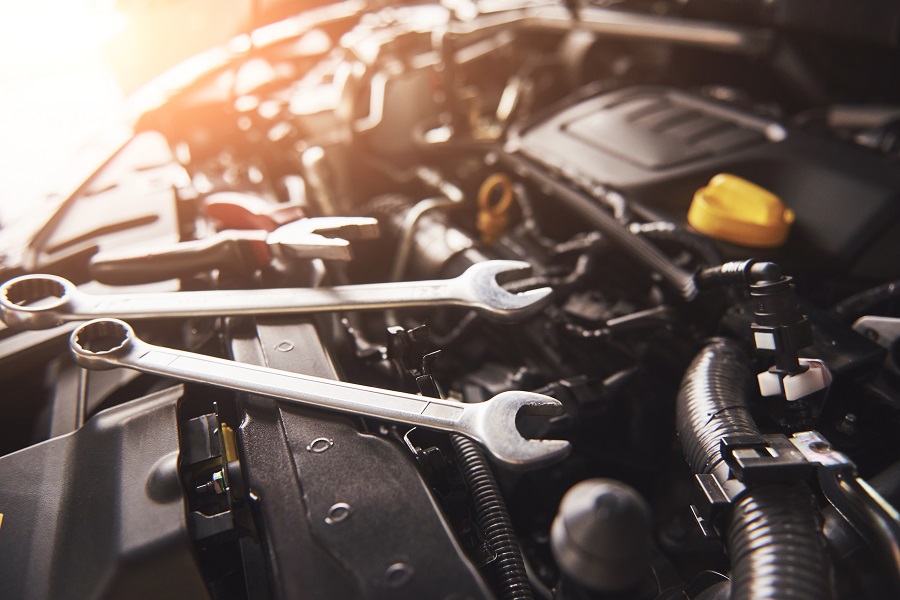The collapse of First Brands isn’t an isolated event. It is the loudest symptom of a systemic sickness gripping the global automotive supply base, where debt, disruption, and demand destruction have converged into a perfect storm.

The Chapter 11 filing of U.S. auto parts maker First Brands on Monday, with its staggering liabilities exceeding $10 billion, did not emerge from a vacuum. It was the crescendo of a crisis that has been building in the engine rooms of the global auto industry for years. T
The company’s failure, triggered by a rapid liquidity collapse and a shocking $2 billion hole in its factoring arrangements, serves as a grim milestone in a sector buckling under the weight of its own ambitions and an unforgiving economic shift.
This is not merely the story of one company’s miscalculations. It is a broader tale of an industry caught between the sunset of the internal combustion engine and the uncertain dawn of the electric vehicle, squeezed by Wall Street’s leverage and Main Street’s inflation, and now facing a reckoning that threatens to leave corporate carcasses and disrupted supply chains in its wake.
The First Brands Implosion: A Case Study in Over-Leverage
First Brands, the Ohio-based brainchild of businessman Patrick James, was built not in a factory, but on a spreadsheet. Its rise to prominence was fuelled by a flurry of debt-financed acquisitions, a roll-up strategy designed to create a dominant player in the automotive aftermarket—the vast ecosystem of replacement parts that keeps America’s 290 million vehicles on the road.
Its portfolio reads like a directory of American garage shelves: Raybestos brake solutions, TRICO wiper blades, FRAM filtration products. These were not niche performance parts, but the essential, high-volume components for the “OE aftermarket”—parts that match original specifications without the original manufacturer’s badge.
But this debt-fuelled acquisition spree created a fragile empire. When the triple threat of rising inflation, increased interest rates, and consumer caution over discretionary spending hit, the company’s cash flow withered just as its debt-servicing costs soared. The model was broken.
“The company’s options for managing its debt were increasingly limited to off-market solutions,” ratings agency Fitch warned in a downgrade just days before the filing, a stark euphemism for a financial dead-end.
The final, devastating blow was the discovery of a nearly $2 billion issue within its factoring arrangements—a form of financing where a company sells its accounts receivable at a discount to meet immediate cash needs. This revelation, now under investigation by the board and creditors, suggests a fundamental breakdown in financial controls and was the catalyst that shattered remaining market confidence. The subsequent debtor-in-possession financing of $1.1 billion is not a rescue; it is life support.
A Pattern of Distress: First Brands Was Not Alone
To view First Brands as an outlier is to misunderstand the scale of the crisis. It is simply the largest and most dramatic failure in a widening pattern of distress that has swept through both the parts manufacturing and retail sectors in recent months.
- Wheel Pros (Hoonigan): Just weeks earlier, on September 9, 2024, this auto parts distributor and retailer filed for a prepackaged Chapter 11, a move to hand control to its first-lien lenders.
- Accuride Corp.: On October 9, 2024, this top manufacturer of wheels for commercial trucks followed suit, seeking a “consensual restructuring” of its debt to survive.
- Marelli Holdings Co.: In a stark parallel to First Brands, this global auto parts giant, owned by private equity firm KKR, filed for Chapter 11 in June with a prearranged plan to wipe out billions in debt and hand ownership to its senior lenders. This highlights that the sickness is global, affecting even tier-one suppliers to the automakers themselves.
- Advance Auto Parts: While avoiding bankruptcy (for now), the struggling retailer with nearly 5,000 stores is a bellwether for end-market health. Its decision to close 727 corporate-owned and independent locations, as well as four distribution centers, is a clear signal of evaporating demand at the counter.
The Structural Headwinds: Why the Entire OE Aftermarket is in Trouble
The root causes of this crisis are deep and structural, creating a hostile environment for the entire “OE aftermarket” sector.
The EV Transition Paradox:
The much-hyped shift to electric vehicles has become a major headwind. As inflation and high interest rates have made new EVs prohibitively expensive for many, consumer interest has stagnated. Paradoxically, this has extended the life of the existing internal combustion fleet, which should be good news for aftermarket parts. However, the uncertainty surrounding the pace of the transition has frozen investment and cast a long shadow over the future value of traditional parts businesses.
The Tariff Tangled Web:
The industry is grappling with the chaotic implications of U.S. import tariffs. A vast number of components are manufactured in China, Taiwan, Indonesia, India, and Eastern Europe. While parts from Canada and Mexico are currently protected under the USMCA, that protection is seen as politically unpredictable. This injects massive cost and planning instability into supply chains.
The Consumer Pullback:
The post-pandemic era of high inflation and rising interest rates has forced households to prioritize essentials. Maintenance and repairs, often seen as discretionary spending, are being deferred. When consumers do spend, they are increasingly price-sensitive, squeezing margins for brands like First Brands.
The Consolidation Conundrum:
The industry’s previous wave of consolidation, exemplified by First Brands’ own strategy, has created a dangerous concentration of risk. “There is so much consolidation—as First Brands Group shows—there will be even fewer producers to come back this time around,” warns one analyst. The failure of a behemoth like First Brands doesn’t just remove one player; it creates a massive hole in the supply chain with fewer robust competitors to fill it.

Implications: Ripples Through Debt Markets and Main Street
The high-profile collapse has immediately rattled the normally staid world of corporate debt. Hedge funds and lenders like Jefferies and Millennium are exposed to the company’s complex financing facilities. The simultaneous bankruptcy of subprime auto lender Tricolor Holdings has investors questioning whether these are canaries in the coal mine for a broader credit downturn.
For the average consumer, the immediate impact may be subtle but will grow. A reduction in competition and manufacturing capacity among parts suppliers inevitably leads to higher prices and longer wait times for common repair parts. The supply chain crises of 2020, largely driven by external shocks, could be recreated in 2025 by internal financial collapse.
The downfall of First Brands is a watershed moment. It marks the end of the financial engineering-led growth model in a sector now forced to confront brutal economic and technological realities. The road ahead is one of painful restructuring, further consolidation, and a fundamental re-evaluation of what it means to be an auto parts company in an age of uncertainty. The industry, it seems, is now in for its own lengthy and expensive repair job.